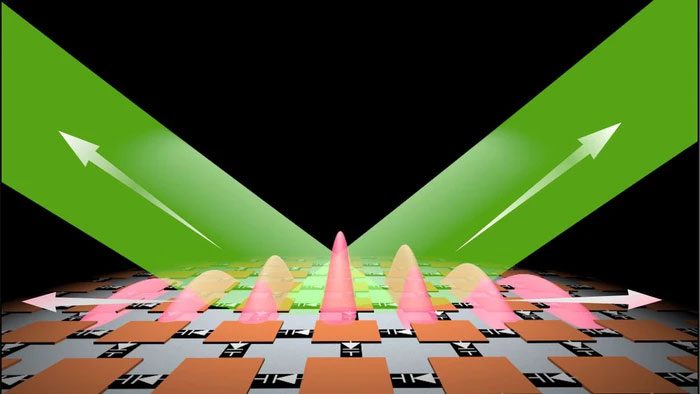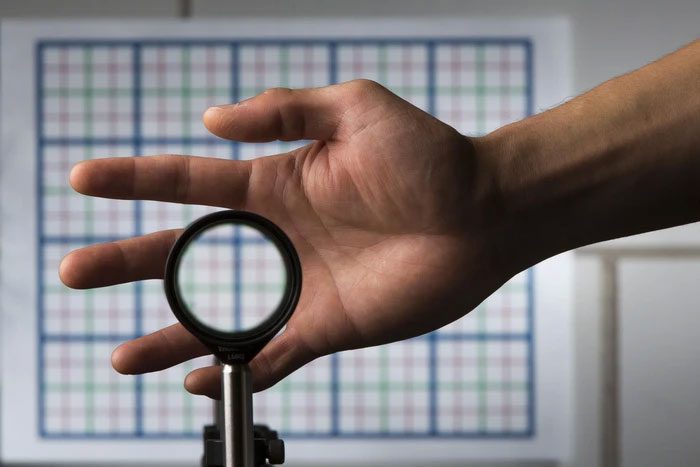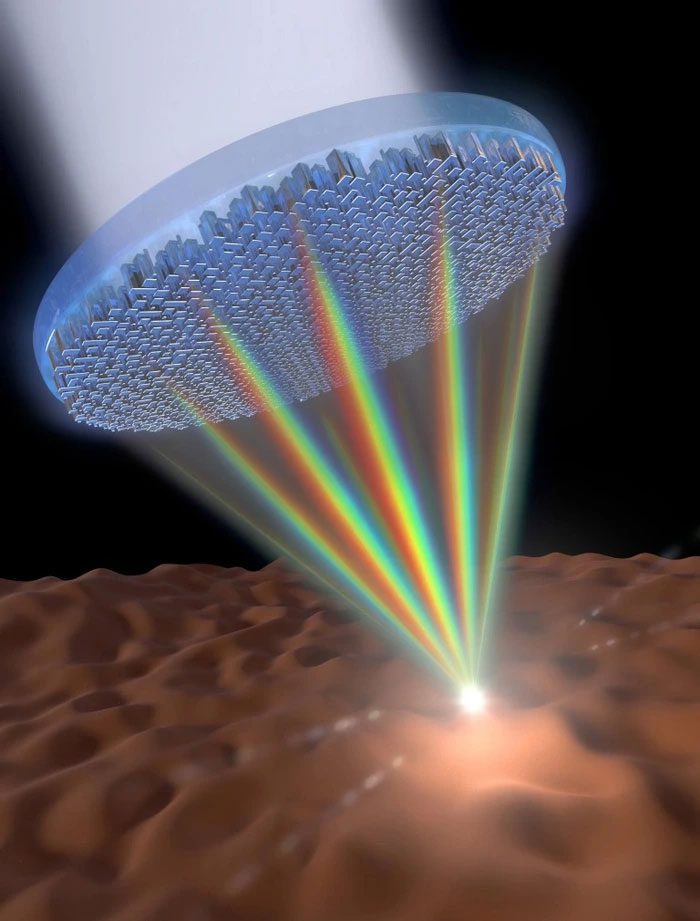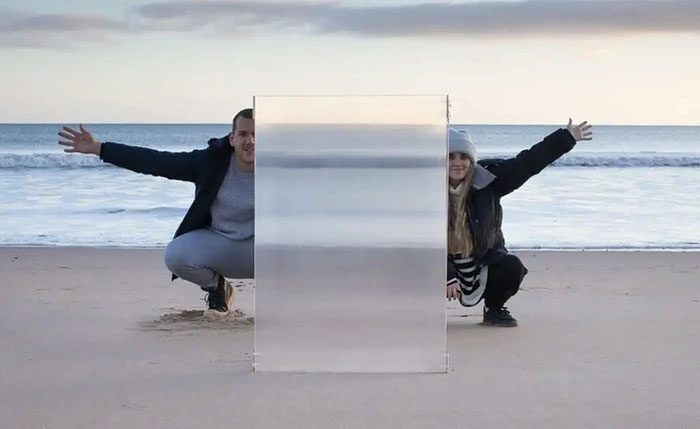The invisibility cloak is no longer just a concept found in science fiction, but recent advancements in optical technology have brought us closer to real-life invisibility cloaks.
How Do Invisibility Cloaks Work?
At its core, invisibility technology relies on controlling light waves, which are responsible for our visual perception. Researchers have developed innovative methods to bend and redirect light, effectively concealing objects from view.
However, creating an invisibility cloak that works across the entire visible spectrum is no small challenge. Previously, scientists have created stealth fighter jets that evade radar and thermal cloaks to hide soldiers from enemy thermal imaging. But to conceal an object from the naked eye as if it never existed requires advanced and complex techniques.
Typically, when light interacts with an object, it is absorbed or reflects off, making that object visible. In contrast, “invisibility” would require light to pass through an object without disruption, as if it were not there. To achieve this, a cloaking device must redirect light from all angles around the object, making it appear invisible from every viewpoint.

Metamaterials are a type of artificial material whose properties depend more on structure than on composition.
Metamaterials play a crucial role in the creation of invisibility cloaks, possessing unique properties not found in nature. By designing these materials with carefully arranged nano-structures, scientists can control the behavior of light waves, allowing them to manipulate light around an object, making that object appear invisible.
Additionally, metamaterials can function as thin lenses that focus light of multiple wavelengths to a single point, overcoming the limitations of traditional lenses.
Another method used to create invisibility cloaks involves the redirection of light. These techniques require precise control over the speed, direction, and intensity of light waves to achieve the desired effect.
Examples of Invisibility Cloaks
Although invisibility cloaks are still a field of ongoing research and development, notable advancements and demonstrations have been made in this area.
Quantum Stealth

By layering multiple lens types with different lens distributions, this material can refract light at many angles, creating “dead spots” that block light from passing through and effectively conceal the subject while leaving the background unaffected.
In 2019, Hyperstealth Biotechnology, a Canadian military camouflage manufacturer, unveiled a prototype of “Quantum Stealth,” a material as thin as paper that can bend light around it. Moreover, this invisibility cloak not only works against visible light but also against infrared and shortwave infrared, making it a broadband invisibility cloak.
Rochester Cloak
Developed in 2014 at the University of Rochester, this cloak can operate in multiple directions within a 3D environment, thanks to a system of four lenses.
This means that the device can hide an object from view regardless of the observer’s position relative to that object. The team achieved this feat by carefully selecting the type of lenses, their power, and the distance between them.
Although the current device shows significant advancements, there are still areas for improvement. Firstly, this setup cannot be transformed into a stealth suit due to its complex and rigid optical system.

In addition to addressing the viewing angle issue, the “Rochester Cloak” allows for the natural state of the background context to be maintained, preserving the surrounding scenery without distortion.
Invisibility Cloak Against Security Cameras
A group of students from China has devised a breakthrough invention to evade security cameras. The result is a cloak designed to make the wearer nearly invisible to AI-monitored cameras – InvisDefense.
InvisDefense possesses the ability to render the wearer invisible to surveillance cameras while remaining visible to the naked eye.
“AI security cameras are everywhere. They permeate our lives,” said Wei Hui, a computer science graduate from Wuhan University who designed the core algorithm for the cloak.
“We designed this product to counteract malware detection capabilities, aiming to protect privacy and safety in certain situations.”

The wearer remains undetected by AI-controlled security systems.
During the day, cameras primarily rely on motion and contour recognition to identify human bodies. By decorating the surface of InvisDefense with specially designed camouflage patterns, the cloak perfectly disrupts the machine vision recognition algorithms, making it impossible for cameras to distinguish the wearer as a person.
As darkness falls, the challenge increases as cameras switch to infrared thermal imaging. To counter this, InvisDefense incorporates anomalously shaped temperature control modules on its inner surface, creating a unique thermal pattern that can deceive infrared cameras.
Metal Cloaks

This flat metalens is the first single lens capable of focusing the entire visible light spectrum – including white light – to a single point at high resolution. It uses arrays of titanium dioxide nanofibers to uniformly focus different wavelengths of light and eliminate chromatic aberration.
A breakthrough in 2018 involved using titanium nanofibers in metal tubes, allowing them to bend light sufficiently to achieve invisibility capabilities. Whereas previous metamaterials could not cover visible light wavelengths, the combination of metalens and metamaterials shows promise in expanding invisibility capabilities to the visible light spectrum.
This advancement in metal technology provides the potential to create devices that effectively cloak visible light, allowing different wavelengths of light to be manipulated to render objects invisible. Although this technology is not yet fully developed, it represents a significant step towards achieving real-life invisibility cloaks in the near future.
Invisibility Shields

According to Invisibility Shield Co., their shield works best when used against uniform backgrounds.
The invisibility shield utilizes a series of precisely designed lenses to deftly manipulate light. By redirecting much of the reflected light from an object away from the observer, it can effectively camouflage the person behind it. The redirected light then disperses across the surface of the shield, creating the illusion of the background.
The Future of Invisibility Cloaks
In the military field, invisibility technology could revolutionize stealth operations, making military assets invisible to radar or surveillance systems. Moreover, in optics, cloaking techniques could enhance the effectiveness of telescopes, microscopes, and other imaging devices.
While we may not soon witness invisibility cloaks akin to those in Harry Potter, the progress made in this field is undeniably impressive. Ongoing research and collaboration among scientists, engineers, and materials experts promise further breakthroughs in the future. One day, invisibility technology could become an integral part of our lives, revolutionizing various industries and changing how we perceive the world.


















































